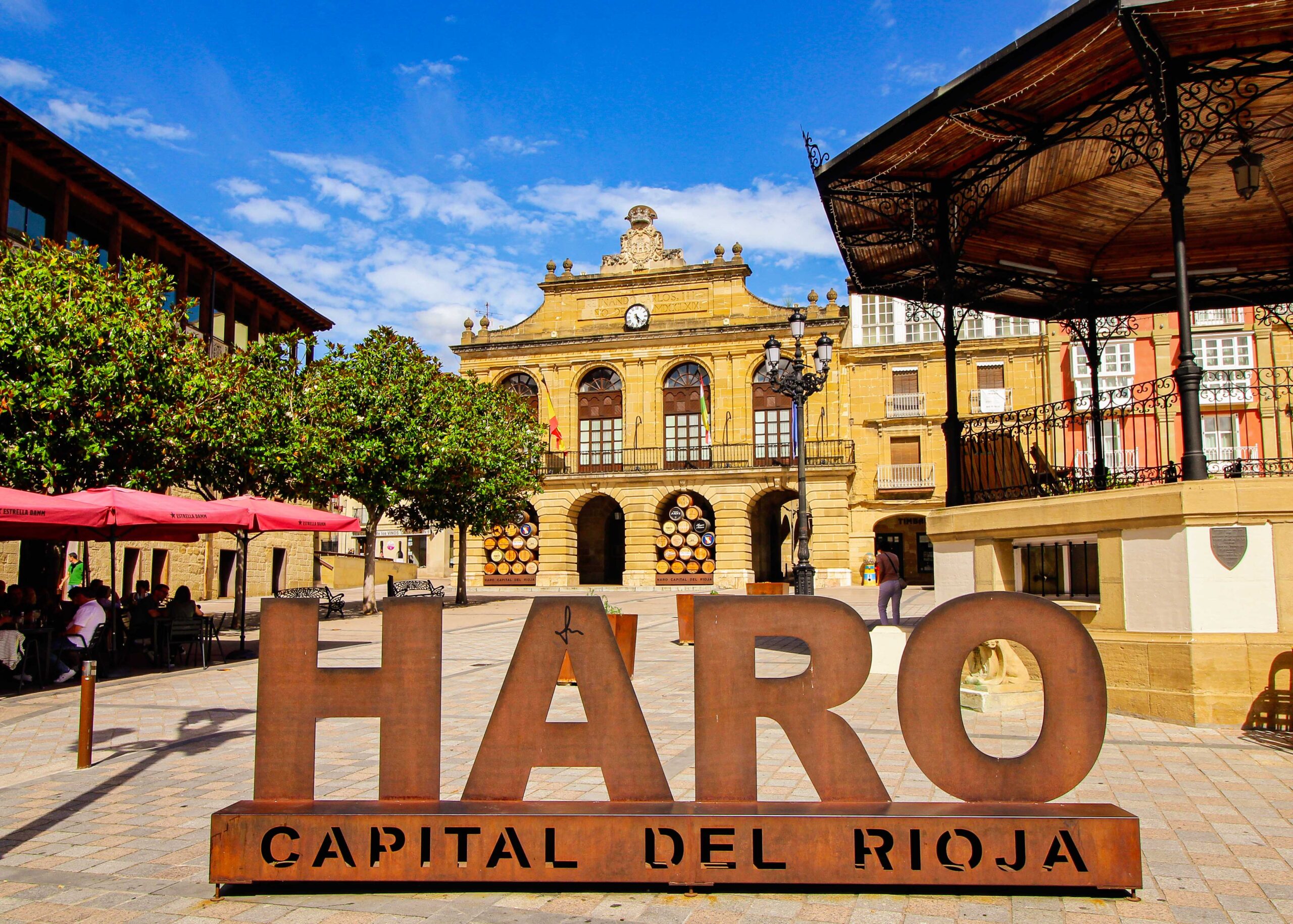We left the Basque Country for the second time and returned to La Rioja to visit its commercial centre, Haro.
This elegant, golden sandstone town perches on a hilltop. Winding streets of vinoteks and tapas bars radiate out from its central Plaza del Paz.
We climbed steadily upward to the gothic church of Santo Tomas. It has a ‘plateresque’ portal, so called because the stone tracery resembles the finely worked detail of ornate silverwork. The practice was introduced to Spain in the 15th century by architects and artisans who had studied in Renaissance Italy.
Inside we learned that the business of building churches relies heavily on the pockets and patience of the authorities. St Tomas was commissioned in July 1564 and one Pedro de Resines agreed to build nine chapels, one tower, the stairs for the organ and tower and chapels for both the baptismal font and choir.
“Surprised by death” in 1573, his son Rodrigo promised to complete the Gothic church in three and a half years.
By July 1581 the municipal council lost patience and pressed charges against the Resines family. In 1589 Pedro de Origoitia was designated to complete the church, until his death in 1600. Like Resines before him, Pedro’s son Andres Garcia inherited the job and promised to complete the roof by the next year.


In 1603 he passed construction rights to Andres Benea, from Urbina, who together with his son Pedro finally completed the nine chapels and choir chapel. In 1671 the job to build the tower was offered for 13,000 ducados and won by Juan Roan who so impressed the authorities with his intentions that they urged him to complete it in just five years. He did, but in 1717, the capital of the tower caught fire and was destroyed together with the bells, the clock and church roof.
It would not be until 1721 that St Tomas was completed by Agustin Ruiz de Ascarraga in a contrasting baroque style to its main Gothic body.
The effect is a mesmerising mix both inside and out. We were proudly escorted by the church’s warden behind the impressively golden Baroque altar to see a quiet chapel housing the figure of Jesus, rescued from the earlier Gothic altarpiece.
 An American chap, who we’d noticed earlier tripping up the alter step, sensed we were being offered a glimpse of something special and hastened his wife to follow us. She tripped up the same step, exclaiming, and the church warden was unimpressed. We chuckled our way quietly out through the treasury.
An American chap, who we’d noticed earlier tripping up the alter step, sensed we were being offered a glimpse of something special and hastened his wife to follow us. She tripped up the same step, exclaiming, and the church warden was unimpressed. We chuckled our way quietly out through the treasury.
In the busy and bustling square, families sat chattering at tables and children ran and played on the flagstones. Oddly, many of the elegant apartments above the stone arcades were being advertised for sale.
We wondered if the town was experiencing a downturn, perhaps as result of the pandemic, meaning people were choosing to leave it. Or indeed, if was the reverse and people were choosing to buy into it? A quick google search revealed prices for a three bedroomed apartment for €360,000 and a three bedroomed townhouse for €60,000, both within moments of each other. It was confusing.

Haro has boomed since the 19th century when French wine sellers flocked to La Rioja anxious to source vintages that resembled French varieties, wiped out in a devastating epidemic of phylloxera.
Haro’s steam railway and station allowed for vast quantities of excellent local wine to be sent at huge volume, and low cost, to thirsty drinkers in France.
It was around the same time that the elegant iron-worked and glazed balconies, miradors, were added to the apartments in Plaza del Paz. We wished the sellers and new owners well, whatever their motivations, and remained perplexed about the pricing policies of local estate agents.




